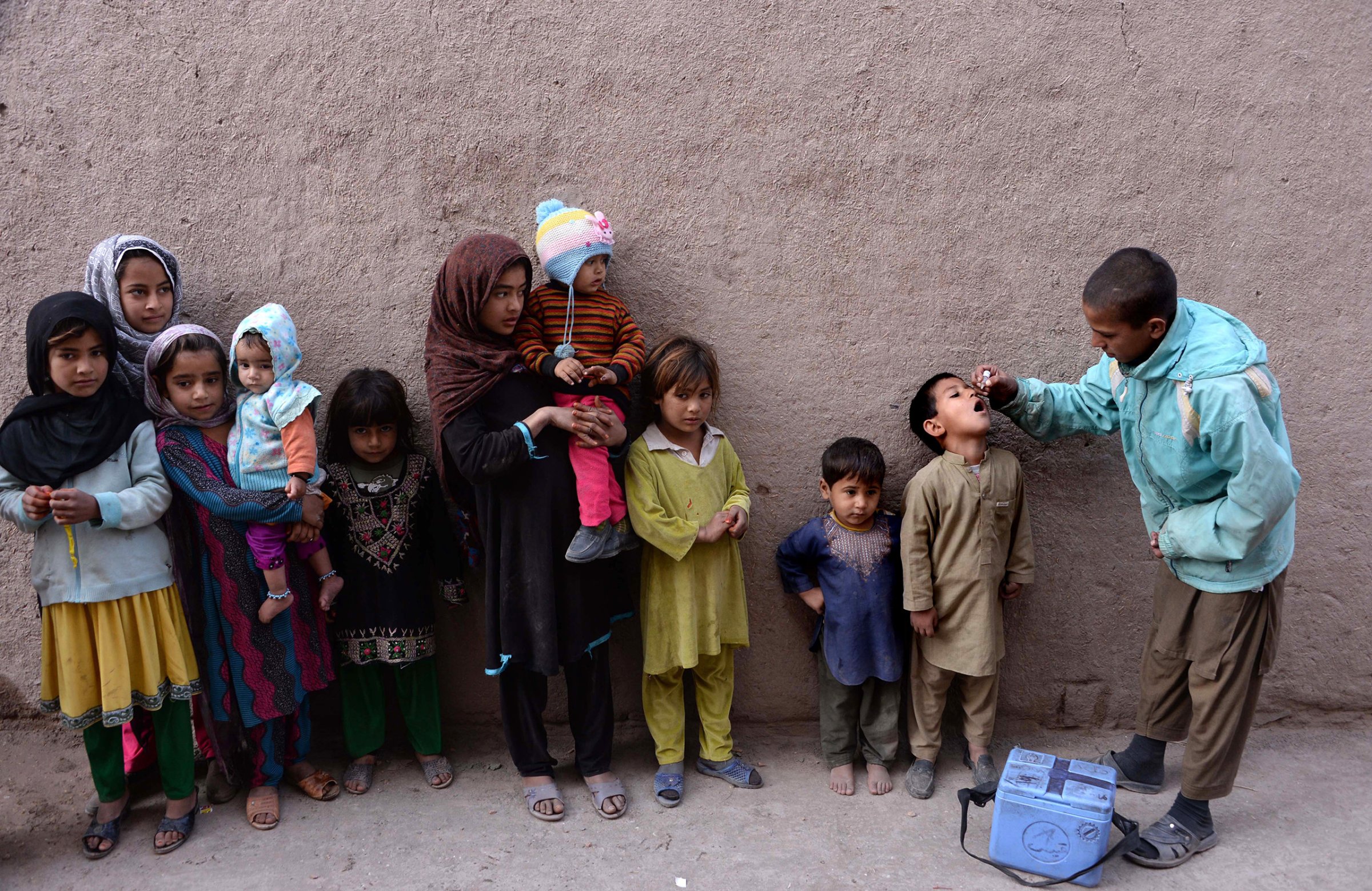
Let’s start simple: Imagine you need to vaccinate a child against a terrible disease. You acquire and administer the correct dosage to protect that child from a debilitating virus. Now, imagine doing that across a whole city. You train health workers, distribute the vaccine to every health facility, explain the process to parents and monitor closely to make sure all children in the city are being reached. Now, do it for a whole district. A whole country. 155 countries. Do all of that in just two weeks.
It’s happening right now, all around the world. Between April 17 and May 1, health workers, governments and communities are working together to execute the largest, fastest effort in history to rollout a vaccine in routine immunization systems, as one of the final steps to end polio forever.
Polio is a virus on the edge of extinction. Over the last 30 years, we’ve reduced cases by 99.9% and saved 15 million children from paralysis or death. In the last year and a half, only two countries have recorded cases of polio caused by wild polioviruses: Pakistan and Afghanistan. But we’re not done yet—to eradicate the disease we need to keep working to reach every child with polio vaccine in all corners of the world.
One vaccine is almost entirely responsible for this incredible progress—the trivalent oral polio vaccine (tOPV), which protects against all three strains of wild polio. But to finally finish off this disease, we’ve got to change our strategy and reach those children, and all the children born over the next few years, with a different vaccine.
The oral polio vaccine uses weakened, live strains of the virus so children can mount an immune response in their guts, stopping the wild virus from attacking their nervous systems and causing paralysis—and keeping them from passing it on to others. This kind of immunity has been hugely important in bringing us close to ending polio. The widespread use of tOPV has eliminated the disease in hundreds of countries and eradicated one of the three strains of wild poliovirus—type 2.
However, in populations that have low vaccination coverage, the live, weakened virus in the oral vaccine can mutate and spread from person to person. In rare cases, these vaccine-derived polioviruses can cause children to develop polio.
Over the last decade, most vaccine-derived polio cases have been caused by the type 2 strain (the one we’ve already eradicated). Since we no longer need to protect against wild type 2, we’re replacing the trivalent vaccine with a bivalent version that doesn’t include the type 2 strain and thus significantly reduces the risk of vaccine-derived polio. This is a massive effort as the current vaccine must be removed from all health facilities in 155 countries and replaced by the bivalent vaccine—all over a two week period. This switch is one of the final steps in the polio endgame plan to stop the disease once and for all.
Never before in the history of vaccines have we collaborated on this scale, this quickly. Getting here has required years of planning, from the laboratory to ministries of health to local health facilities, in countries from Mexico to Nigeria.
A vaccine rollout of this speed and size comes with challenges, particularly because preventing outbreaks of vaccine-derived type 2 polio requires that every country switch their vaccines within the same two-week window. A synchronized switch will ensure that children in a country that’s no longer vaccinating with an oral polio vaccine against type 2 aren’t at risk of being exposed to the strain, which could happen if the trivalent vaccine were still being used elsewhere. The commitment by all 155 countries to make this happen shows that, as a global community, we’re able to come together behind a single goal to improve the health of children everywhere.
This globally coordinated vaccine project will yield important lessons for strengthening immunization more broadly. Polio vaccines are one of a number of important immunizations children receive to protect against vaccine-preventable diseases such as measles, rotavirus, and tetanus. As we embark on this global switch, we will learn more about how to deliver vaccines all over the world and protect children from other diseases that kill millions each year.
In the end, it’s that simple—every single child deserves a childhood free from the threat of diseases that we know how to prevent. Together we are proving that we can make that happen.
More Must-Reads from TIME
- Why Biden Dropped Out
- Ukraine’s Plan to Survive Trump
- The Rise of a New Kind of Parenting Guru
- The Chaos and Commotion of the RNC in Photos
- Why We All Have a Stake in Twisters’ Success
- 8 Eating Habits That Actually Improve Your Sleep
- Welcome to the Noah Lyles Olympics
- Get Our Paris Olympics Newsletter in Your Inbox
Contact us at letters@time.com